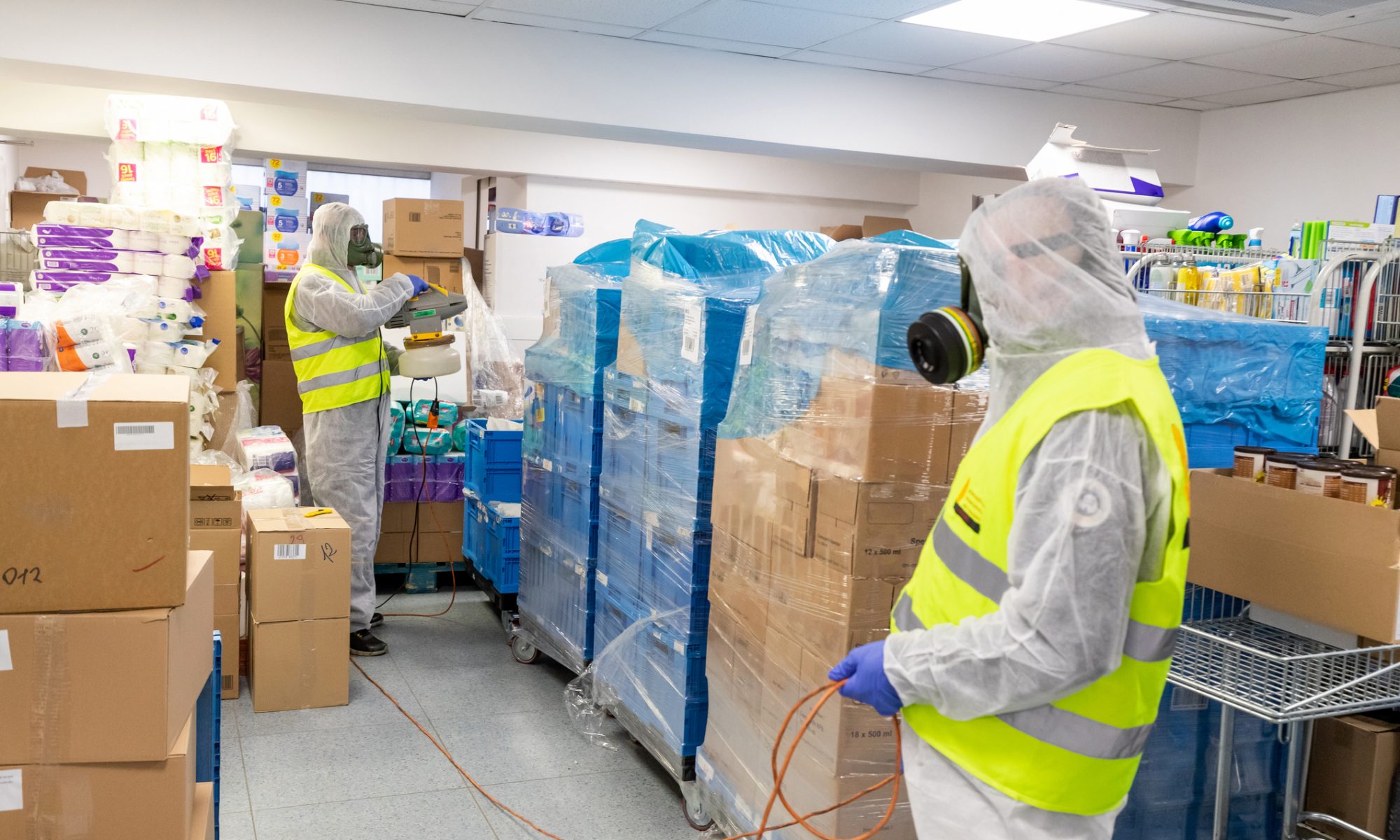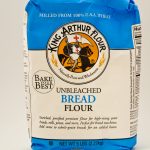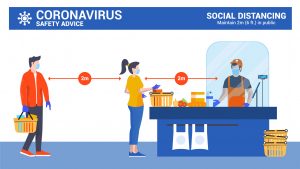
A shopper commented, “Each time I go to the store it seems the grocery bill is higher. Even frozen food that is normally a cheaper option than fresh seems to cost more. Hopefully prices will come back down once things get back to normal.”

Unfortunately, prices are not likely to come down anytime soon. The Coronavirus has disrupted our local and international food supply chains and changed our eating styles. In America and other countries, more people are cooking at home now out of necessity and not necessarily by choice. Most restaurants are still closed and not everyone can afford to order “take-out” food. As a result, supermarket and grocery store sales are booming. When you add “panic buying” to the agenda it’s no surprise that supplies are dwindling as prices continue to rise.
 Panic buying doesn’t just mean people scrambling for toilet paper and paper towels. Take a common household staple like flour. King Arthur Flour, an employee-owned business and one of the oldest companies in the United States, had sales of just over 150 million last year. Recently their sales increased 600 percent almost overnight – flour was flying off the shelves in grocery stores like never before. Americans were baking again. And stocking up.
Panic buying doesn’t just mean people scrambling for toilet paper and paper towels. Take a common household staple like flour. King Arthur Flour, an employee-owned business and one of the oldest companies in the United States, had sales of just over 150 million last year. Recently their sales increased 600 percent almost overnight – flour was flying off the shelves in grocery stores like never before. Americans were baking again. And stocking up.
Looking at Sales
According to AFFI and research partner 210 Analytics, frozen foods took an initial leap in sales of 94% in mid-March when lockdowns began, and still remain strong, continuing to hold a 30-35% increase in April 2020 compared to a year earlier. Even better, stats show that 7%of the consumers of frozen food are new customers that never bought frozen before Covid-19. The most popular items? Frozen vegetables, meat/poultry and pizza. Why the attraction to frozen? Ease of preparation, convenience, longer shelf life, faster time to the table, and less trips to the grocery store. One of the strongest beliefs about frozen foods from surveyed buyers? 33% believe that frozen foods are currently safer than fresh!
Looking at Pricing
Back to the issue of rising food prices. Looking at the Bureau of Labor Statistics and pricing for April 2020, in the breakfast category, eggs rose 16.1% last month (the biggest increase for any single food), breakfast cereals 1.5% and bread 3.7%. Drink coffee? Expect to pay 1.2% more for roasted coffee and instant coffee was up 2.6%. Fruit took a jump of 1.5% with apples leading the way at 4.9% and oranges 5.6%. We expected meat prices to increase due to certain plant closures and sure enough meat and pork prices were up 3.3%, and chicken 5.8%. Even the lowly hot dog got 5.7% more expensive.

For those on fixed incomes, these price increases may be hard to swallow, but they’re not going away any time soon. Huge investments in personnel and food safety are now being made at farm, production and store levels. Costs for new sanitation procedures, social distancing protocols, additional staff and protective barriers will continue to be reflected in higher food prices in the coming months.
Lily Noon
References:
- Grocery Prices are Soaring – Apple News
- Bureau of Labor Statistics – Average Retail Food and Energy Prices
- People are Baking Bread Like Crazy – Washington Post
- Frozen Food Sales on Pace for 3rd Straight Week – www.affi.org
- US Grocery Costs Jump Most in 46 Years, Led by Rising Prices – www.cnbc.com
- Food Price Outlook, 2020 – USDA ERS
ある買い物客が、次のようにこぼしていました。「お店に行くたびに食料品の値段が上がっていくように思えます。普段は生鮮食品よりも安い冷凍食品ですら、高く感じられます。世の中が平常化する時には、値段も下がってくれるといいのですが」。
残念ながら、価格が近く下がる見通しはありません。新型コロナウイルス感染症によって、国内外の食品サプライチェーンに支障が及び、私たちの食生活も変化しました。米国でも他の国でも、自宅で調理する人が増えています。必ずしも好んで選択しているわけではなく、必要に迫られてのことです。ほとんどのレストランは今も休業しています。テイクアウトは可能ですが、誰もがその金銭的余裕があるわけではありません。結果として、スーパーや食料品店が繁盛しています。加えて「パニック買い」の側面もあるため、供給が不足して価格が高騰するのは驚きではありません。
パニック買いとは、トイレットペーパーや紙製品に消費者が殺到することだけを指すわけではありません。小麦粉のように一般的な食品にも当てはまります。King Arthur Flourは、家族経営の小麦粉メーカーで、米国最古の企業のひとつです。昨年の売上高は1億5,000万ドル強でしたが、最近、それがほぼ一夜にして600%増となりました。今までに見たこともないスピードで、食料品店の棚から小麦粉が消えてなくなります。アメリカ人がパンやお菓子作りに回帰しているからです。それに、買いだめしています。
売上高を見てみると
米国冷凍食品協会(AFFI)とリサーチパートナーの210 Analyticsによると、冷凍食品は、外出規制が導入された3月中旬に、まず最初の飛躍的成長を示し、販売高が94%増となりました。その後も堅調に推移していて、2020年4月の販売高は前年同月比30~35%増でした。しかも、嬉しいことに、冷凍食品を買っている人の7%は、これまで買うことのなかった新規顧客です。最も人気の冷凍食品は、野菜、肉類・鳥肉類、そしてピザです。冷凍食品が人気を博す理由としては、調理が簡単、便利、賞味期限が長い、手早く作れる、買い物の回数を減らせる、といった点が挙げられます。また、調査回答者の33%は、冷凍食品の魅力として、 現時点では生鮮食品よりも安全に思えると指摘しました。
価格を見てみると
値上がりの問題に話を戻しましょう。米国の労働統計局の2020年4月の数値によると、まず朝食に食べるものでは、卵が前月比16.1%(単品の食品としては最大の上昇幅)、シリアルが1.5%、パンが3.7%の上昇でした。コーヒーを飲む方は、焙煎コーヒー豆なら1.2%、インスタントコーヒーなら2.6%の値上がりを目にしたはずです。果物は1.5%の価格上昇で、リンゴが4.9%、オレンジは5.6%でした。肉類は、一部の工場が閉鎖されたのを受けて価格が上がるだろうと私たちも予測していましたが、実際そのとおりで、牛肉・豚肉は3.3%、鶏肉は5.8%でした。月並みなホットドッグ用のソーセージまでもが、5.7%の高騰を見ました。
収入が毎月決まっている人にとって、これらの値上がりは決して容易に飲めるものではありません。しかも、近く解消することはなさそうです。農業生産、加工処理、小売店の各レベルで、労働安全と食品安全に多大な投資が行われているためです。新しい衛生管理手順やソーシャルディスタンスのプロトコル、スタッフ増員や保護バリア設置などのコストは、今後数カ月にわたり、食品価格に転嫁され続けるでしょう。
Lily Noon
参考文献:
- Grocery Prices are Soaring(食品価格が高騰) – Apple News
- Bureau of Labor Statistics – Average Retail Food and Energy Prices(労働統計局―食品・エネルギーの平均小売価格)
- People are Baking Bread Like Crazy(パン作りが大人気) – Washington Post
- Frozen Food Sales on Pace for 3rd Straight Week(冷凍食品販売高、3週連続の伸び) – www.affi.org
- US Grocery Costs Jump Most in 46 Years, Led by Rising Prices(米国の食品コストが過去46年で最大の上昇、価格高騰が原因) – www.cnbc.com
- Food Price Outlook, 2020 – USDA ERS(2020年食品価格展望 ― 米国農務省経済リサーチサービス局)
